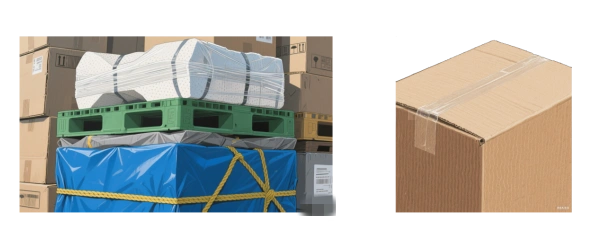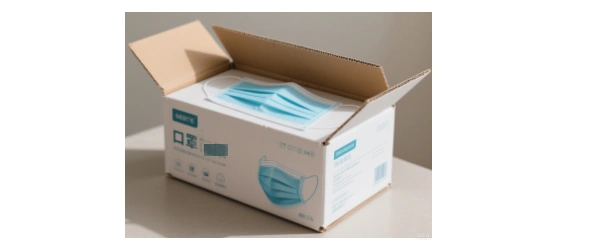Drop Test
Drop Tester for Packaging
ASTM D4169 & ASTM D5276 & ASTM D5487 & ASTM D7386
About
Drop Tester
Packaging plays a critical role in protecting products during transportation, storage, and handling. A drop tester is one of the most important instruments used by quality control teams to assess the durability and reliability of shipping containers, cartons, and packaging systems. By simulating real-world drops, companies can ensure that their packaging meets safety, regulatory, and customer requirements.
At Cell Instruments, we specialize in providing advanced drop test equipment designed to comply with international testing standards such as ASTM D4169, ASTM D5276, ASTM D5487, and ASTM D7386.
Drop Testers and Their Importance
Importance of Drop Tester in Packaging Quality Control
Every package faces risks of shock and impact during logistics. The carton drop test standard and carton drop test procedure outlined in ASTM methods help manufacturers evaluate whether packaging designs can withstand these hazards.
A package drop tester is used to simulate:
- Free-fall drops from different heights and orientations.
- Edge, corner, and flat surface impacts.
- Controlled shock inputs through advanced shock machines.
These tests are essential for preventing product damage, reducing customer complaints, and minimizing financial losses in the supply chain.
ASTM Standards for Drop Testing
Understanding Key ASTM Standards for Package Drop Testing
To ensure consistency, reliability, and global recognition of test results, the industry relies on standards set by organizations like ASTM International. Adhering to these protocols is crucial for any credible testing program.
01
ASTM D4169
The ASTM D4169 standard is a comprehensive protocol that defines a general simulation of a distribution environment. It doesn’t prescribe a single test but rather a sequence of tests, including compression, vibration, and crucially, drop testing. The ASTM D4169 drop test segment specifies the drop heights and sequences based on the anticipated distribution cycle severity (e.g., truck, rail, air) and the weight of the package. Compliance with this standard ensures that your packaging system has been evaluated against a holistic set of hazards it will encounter in the real world.
02
ASTM D5276
The ASTM D5276 standard outlines the procedure for performing a drop test of loaded containers by free fall. This is the classic physical test where a package is lifted to a predetermined height and released to free-fall onto a rigid impact surface. The standard provides meticulous details on how to orient the package—whether on a face, an edge, or a corner—with tolerances as tight as a 2° angle to ensure impact accuracy. Understanding the carton drop test procedure as defined by D5276 is essential for obtaining repeatable and meaningful results that truly reflect package performance.
03
Other Critical ASTM Protocols
Beyond D4169 and D5276, other standards offer specialized testing approaches. For instance, ASTM D5487 covers the use of shock machines to simulate drop effects, which can be more efficient and reproducible than manual free-fall methods. Similarly, standards like ASTM D7386 address specific concerns for testing large loads. Familiarity with these protocols allows testing labs to choose the most appropriate method for their specific package type and testing goals.
Procedures and Best Practices
How Drop Testers Work
Pro Tip: Proper fixturing is essential to avoid skewed results. For corrugated materials, minimal pressure ensures accurate stress measurement.
Modern drop test equipment employs advanced mechanics to simulate drops accurately. Key procedures include:
1. Unrestrained Drop Testing (ASTM D5487 Method A):
- Containers are dropped without fixturing, allowing natural rebound.
- Pneumatic bumpers prevent secondary impacts, ensuring single-shock accuracy.
- Critical for assessing cumulative damage from multiple drops.
2. Restrained Drop Testing (ASTM D5487 Method B):
- Containers are secured to the shock table to transmit direct impact.
- Ideal for measuring precise shock responses in controlled environments.
3. Free-Fall Drop Testing (ASTM D5276):
- Containers are dropped from predetermined heights onto rigid surfaces.
- Focuses on face, edge, and corner impacts to evaluate packaging integrity.
Applications Across Industries
Applications of Drop Test Equipment
01
Packaging & Logistics
Validate carton box drop test standards to optimize shipping designs


02
Medical & Pharmaceutical
Ensure sterile packaging survives handling and distribution, ensuring safe delivery of sensitive products.
03
Electronics & Consumer Goods
Evaluating packaging integrity of bottles and cans.
04
Food & Beverage
Protect fragile components during transit.
Why Choose Cell Instruments Drop Test Equipment
When selecting a drop tester manufacturer, accuracy, durability, and compliance with standards are critical. Cell Instruments offers:
Lab drop tester models for R&D and packaging laboratories.
– Cell Instruments
Packaging drop test machines for production and quality assurance.
– Cell Instruments
Compliance with ASTM Standard to meet requirements.
– Cell Instruments
Customization options for special packaging and automation needs.
– Cell Instruments
Our machines are trusted by quality inspection agencies and manufacturers worldwide for their precision and repeatability.
– Cell Instruments
Frequently Asked Questions about Drop Tester
1. What is a drop tester?
A drop tester is a device that simulates the impact of a package being dropped during handling, transport, or storage. It evaluates the strength of shipping cartons, containers, and protective packaging materials.
2. Why is drop testing important for packaging?
Drop testing helps determine whether packaging can protect products from damage caused by shocks, impacts, or accidental drops. It ensures product safety, reduces damage rates, and supports compliance with international standards.
3. What standards are used for drop testing?
The most common standards include ASTM D4169, ASTM D5276, ASTM D5487, and ASTM D7386. Each defines specific methods for evaluating packaging under different conditions.
4. What is ASTM D5276 drop test?
ASTM D5276 is a standard method for free-fall drop testing of loaded containers such as boxes, bags, and cylindrical packages. It measures the ability of packaging and inner materials to protect contents during impact.
5. What is ASTM D4169 drop test?
ASTM D4169 provides performance testing procedures for shipping containers. It simulates distribution cycles, including drops, compression, and vibration, to ensure packages withstand real-world logistics conditions.
6. What is ASTM D5487 simulated drop test?
ASTM D5487 specifies drop testing using shock machines, which replicate vertical drops under controlled conditions. It is especially useful for bulky or heavy packages that cannot be tested with free-fall methods.
7. What is ASTM D7386 drop test?
ASTM D7386 is a standard test method for performance testing of unitized loads and large shipping containers. It includes drop procedures for packages weighing more than 150 lbs (68 kg).
8. What types of packages can be tested with a drop tester?
Drop testers are suitable for cartons, corrugated boxes, crates, cylindrical containers, bags, pouches, bottles, and unitized loads. Both consumer packaging and industrial shipping containers can be evaluated.
9. What is the difference between a free-fall drop tester and a shock machine?
A free-fall drop tester releases packages from specific heights to simulate accidental drops, while a shock machine (ASTM D5487) delivers controlled impact forces, ideal for large or heavy containers.
10. Why choose Cell Instruments for drop test equipment?
Cell Instruments offers lab drop testers and packaging drop test machines designed for precision, durability, and compliance with international standards. We also provide customization and automation solutions to meet specific testing requirements.


Get in touch
No. 5577 Gongyebei Rd, Licheng, Jinan, 250109, Shandong, P.R.C.
marketing@celtec.cn
+86 185 6001 3985
